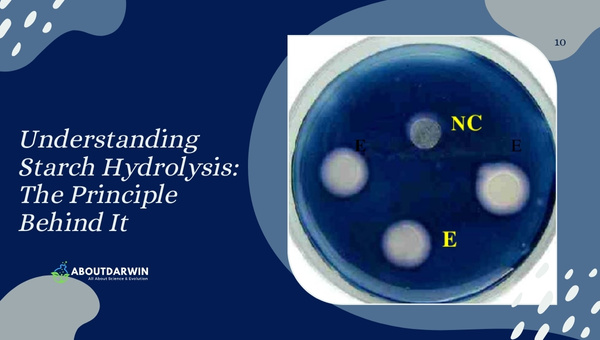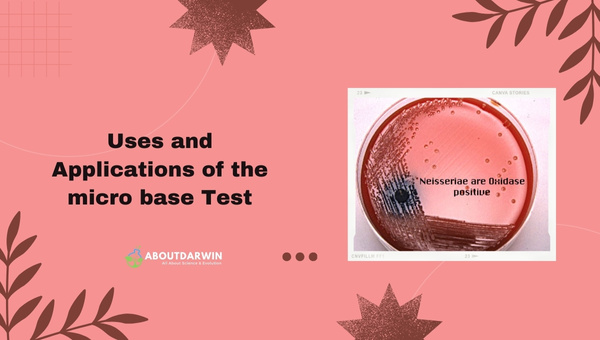Physical Address
304 North Cardinal St.
Dorchester Center, MA 02124
When it comes to the field of microorganism identification, an essential player that comes to my mind is the Microdase Test. For those unaware, a Microdase test can be likened to a detective tool wielded by microbiologists who specialize in decoding the unique features of different microorganisms.
Essentially, it’s a simplified method used for differentiating staphylococcus from micrococcus based on their oxidative activity. The exciting thing about this test is that it not only helps establish significant differences between our suspect organisms but also produces results relatively fast.
While its simplicity and quick turnaround are impressive features, what sets the Microdase test apart is its high specificity. It provides distinctive insights and unravels microbial mysteries like no other. So join me as we delve into understanding this unique scientific technique further!
Contents
Like most folks, you might’ve pondered, “What on earth is a Microdase test?” Well, let me clarify this for you in layman’s terms. Basically, the Microdase test is a biochemical test conducted with certain bacteria to detect an enzyme known as oxidase. This nifty little operation unveils which bacteria produce this inquisitive enzyme and those that don’t.
Primarily applied to coagulase-negative staphylococci in clinical lab settings, it’s essentially a detective mechanism. At its core sits the quest to identify organisms that possess cytochrome c oxidase—an integral part of the bacterial electron transport chain.
Let me get straight to it: why ought one bother with something as intricate-sounding as a ‘Microdase Test’? Frankly put, curiosity doesn’t always kill the cat! Identifying specific strains of bacteria can be indispensable when tracking down infectious pathogens or assessing microbial diversity in environmental samples.
Moreover, from diagnosing potentially serious infections to influencing treatment decisions for patients – these nuances make all the difference! Put—the outcomes of this teeny-weeny procedure translate into massive impacts on healthcare and beyond. So hey—why not ‘Microdase,’ right?
Also Read: Unveiling MacConkey Agar: Composition, Principles, and Uses
To understand the test, read the points given below :

Also Read: Cetrimide Agar: Uncover Its Composition, Principle, and More
You’re bound to be curious about how this high-tech test rolls out. But it’s a method that employs chemical reactions to unveil the hidden traits of bacteria!
The basic steps of the procedure are given below :
These steps may sound scientific and intimidating because they are – but once you get the hang of it—it isn’t so bad! Trust me!
Also Read: Isostatic Rebound: Uncovering Post-glacial Rebound Process

Some uses are mentioned below :
One of the primary uses of the Microdase Test is in clinical diagnostics. It’s a rapid method to distinguish between certain bacteria groups, particularly staphylococci, and micrococci. This helps healthcare workers make treatment recommendations.
In addition to its use in healthcare, the Microdase Test can also be deployed in environmental research. By highlighting bacterial diversity, researchers can gain insights into ecological health and disease outbreaks.
Another intriguing application of this test resides within the food and beverage industry. It aids in identifying possible foodborne pathogens, hence ensuring safety standards are met.
The scope of the Microdase test extends into water management as well. Bacterial detection is critical to evaluate water sanitation levels or identify potential threats to aquatic biodiversity.
Even our furry friends stand to benefit from this microscopic detective work! When diagnosing conditions that could be bacterial-based, a Microdase test can lead veterinarians toward an efficient treatment pathway for our pet pals.
Remember, each use underscores its pivotal role in maintaining societal health!
Also Read: Acid-Fast Stain Revealed: Unveiling Microbial Secrets
Here are the results that you should know :
| Parameter | Outcome | Significance |
|---|---|---|
| Test Zone Color | Dark Purple to Black | Positive |
| Time for Color Change | Within 10 Seconds | Positive |
| Time for Color Change | More than 10 Seconds | Negative / Weakly Positive |
| Absence of Color change or False color change (like Blue, Green etc) within stipulated time frame. | Unreliable / Invalid Test | null |
Now, when it comes to positive cases in a Microdase test, I promise not to bog you down with jargon. You see when a bacteria sample turns dark purple (or sometimes black) within ten seconds of applying the test reagent—bingo! That’s a positive case right there.
But what does this mean? Put, these rich-colored results indicate that the tested bacteria is producing an oxidase enzyme. It suggests the presence of Staphylococcus aureus or some other oxidase-positive coagulase-negative staphylococci—revealing key clues towards diagnosing pesky bacterial infections.
Moving on to negative results — nope, these folks aren’t party-poopers! They’re just as significant as their positive counterparts. A negative result emerges when there’s no color change or if the color-changing part takes more than ten seconds.
What’s the inside scoop? Negative results may point towards organisms like Micrococcus species and other coagulase-negative staphylococci that don’t produce this particular enzyme—the oxidase we’ve been exploring. They help us downsize that list of infectious suspects—not too shabby for something ‘negative,’ huh?
Also Read: Unraveling Potato Dextrose Agar (PDA): Principle & More
The microdase test is also termed a modified oxidase test. It is one of the rapid tests employed for the differentiation between Staphylococcus and Micrococcus, which are Gram-positive cocci having catalase enzyme. The test is based on the detection of oxidase enzyme.
Differentiate Staphylococcus from Micrococcus by detecting the oxidase enzyme with Thermo Scientific™ Remel™ Microdase Disk.
The oxidase test often uses a reagent, tetra-methyl- p-phenylenediamine dihydrochloride, as an artificial electron donor for cytochrome c.
Free coagulase reacts with a globulin plasma factor (coagulase-reacting factor) to form staphylothrombin. Staphylothrombin then catalyzes the breakdown of fibrinogen into insoluble fibrin. The insoluble fibrin then forms the clot that is seen in the top tube in the image.
Also Read: Unlock DNA Discoveries: Free DNA Upload Websites Guide
So there you have it – a microscopic magnifying glass detailing the nitty-gritty of the renowned Microdase test. From outlining its fundamental principles to shedding light on its exhilarating applications, we bet you’re now on first-name terms with this biochemical mainstay.
In retrospect, what truly encapsulates the essence of this test is its potential impact on medical decisions and treatments. And while it may appear all too convoluted at first glance, digging a little deeper does unravel the simplicity beneath all the scientific jargon.
Trust me; I hope our rendezvous with Microdase was intriguing! So here’s signing off until we meet again at another microbiological crossroad!